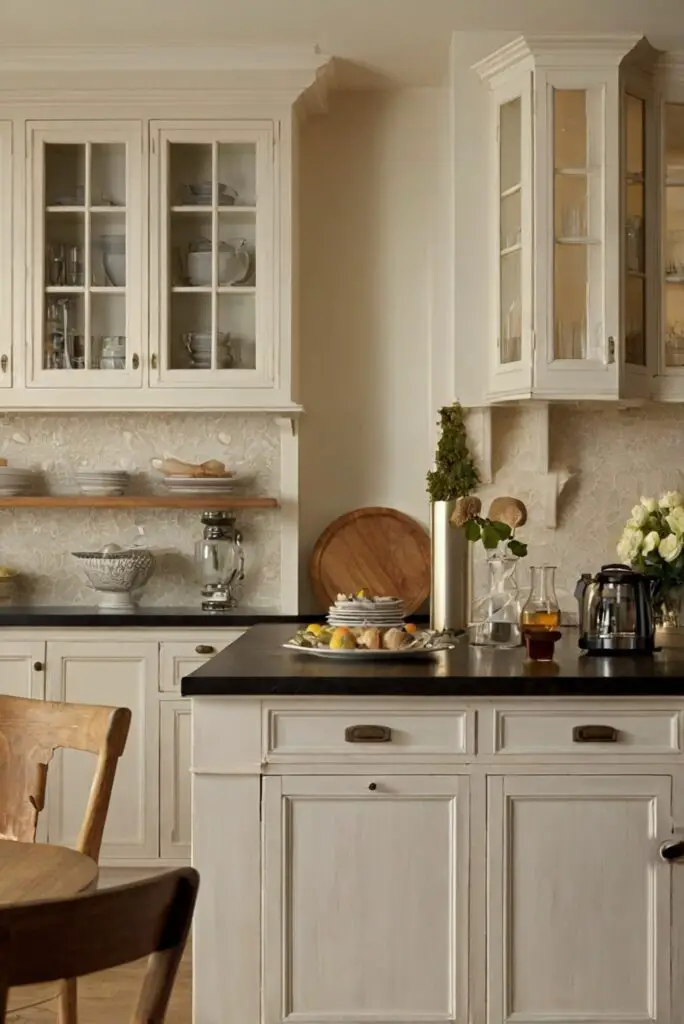Discover how to infuse your kitchen with everlasting style by exploring classic and contemporary color schemes in this guide.
From classic to contemporary, exploring timeless kitchen color schemes is a daily routine for an interior designer. When selecting colors for a kitchen, it’s important to consider the overall theme, lighting, and size of the space. Classic colors like whites, greys, and blues can create a clean and timeless look, while contemporary kitchens often feature bold and vibrant colors for a modern feel. It’s essential to match colors with the existing decor and choose paints that complement each other well. Using a color wheel can help in selecting harmonious hues. Organizing color samples and swatches can also aid in making the right choices for a cohesive design.
How to choose a timeless color scheme for my kitchen?
When selecting a timeless color scheme for your kitchen, it is essential to consider classic color palettes that have stood the test of time. Opting for neutral colors such as white, beige, gray, or navy blue can create a timeless look that transcends trends. These colors provide a versatile backdrop that allows you to experiment with various decor styles over the years. Additionally, incorporating natural elements such as wood or stone can add warmth and texture to the space.
What is the best way to incorporate classic colors into a contemporary kitchen design?
My Lovely Spring Paint for 2025
Ready for a Spring Makeover? Explore the Freshest 2025 Paint Trends!
White Sage/Green SW Pistachio green Soft blue Honeysweet/Orange Pink Sugar Sage Tint BMAs an Amazon Associate, I may earn a commission from qualifying purchases at no extra cost to you.
To seamlessly blend classic colors into a contemporary kitchen design, you can use a mix of traditional hues with modern accents. For example, pairing a classic white kitchen with sleek stainless steel appliances or matte black fixtures creates a harmonious balance between timeless and contemporary elements. Introducing bold pops of color through accessories or statement pieces can also add a modern twist to a classic color scheme.
Can I mix and match different color schemes in my kitchen?
Mixing and matching different color schemes in your kitchen can create a dynamic and visually interesting space. However, it is crucial to maintain a cohesive color palette to avoid a chaotic or overwhelming look. You can achieve this by selecting a dominant color and incorporating complementary or accent colors to enhance the overall aesthetic. Experimenting with various shades and tones within the same color family can also add depth and dimension to your kitchen design.
How do I ensure that the chosen color palette will stand the test of time in my kitchen?
To ensure that your chosen color palette remains timeless in your kitchen, consider the long-term impact of the colors you select. Opt for classic hues that have proven longevity in interior design, such as soft grays, warm whites, or muted blues. Avoid trendy or highly saturated colors that may quickly go out of style. Additionally, incorporating timeless materials like marble, wood, or brass accents can further enhance the longevity of your color scheme.
What are some alternatives to traditional kitchen paint colors for a modern look?
My fAV Spring DECOR for 2025
Discover Spring’s Best 2025 Decor Combinations – Perfect for Any Room!
Oversized Indoor Plants White Curved Sofas Rugs BOH Brown Cream Moroccan Hype Boho Rug Outdoor Patio Furniture Sets Topfinel Pillow CoversAs an Amazon Associate, I may earn a commission from qualifying purchases at no extra cost to you.
For a modern twist on traditional kitchen paint colors, consider using bold or unexpected hues that add personality and depth to the space. Dark charcoal, deep emerald green, or rich navy blue can infuse a sense of drama and sophistication into your kitchen design. Contrasting these bold colors with light neutral tones or metallic finishes can create a dynamic and contemporary look that is still enduring.
How can I match kitchen colors with other elements like countertops or cabinets?
When coordinating kitchen colors with countertops or cabinets, aim for a harmonious color scheme that ties all elements together seamlessly. For instance, if you have dark wood cabinets, opt for lighter countertops to create a balanced contrast. Alternatively, you can use a complementary color for the countertops that enhances the richness of the cabinets. Keeping the color palette cohesive and consistent throughout the space will ensure a cohesive and well-designed kitchen.
Why is it important to consider the overall room decor when selecting kitchen color schemes?
Considering the overall room decor when selecting kitchen color schemes is crucial to create a cohesive and unified look throughout your home. The kitchen is often the heart of the house and should flow seamlessly with the adjoining spaces. By taking into account the existing decor style, furniture, and color palette of adjacent rooms, you can ensure a harmonious transition from one space to another. This approach creates a cohesive design that enhances the overall aesthetic of your home.







